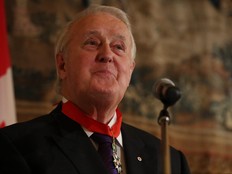Let’s talk about the Beatles: The records, the friendships and why they endure

Article content
John Lennon once defined himself as a “record man” – he preferred listening to records over attending live performances. Though I saw the Beatles live in Ed Sullivan’s studio, I have to agree with John: Records provide a repeatable pleasure that’s often exclusively personal, a romance between the singer’s voice and the listener’s ear. Records are material, tangible and portable; they enter history in a way live performances can’t.
For fans of recorded music – and the Beatles – “Ribbons of Rust: The Beatles’ Recording History in Context” delivers a fascinating look at how the group’s record-making dream became a reality. This detail-heavy history by Robert Rodriguez and Jerry Hammack showcases the postwar Liverpool environment that fostered the Beatles’ first No. 1 record, “Please Please Me”: the 45s the Beatles listened to; the technology available to them, such as house studios and portable tape recorders (the book’s title is a reference to the recording tape the band used). The book also examines how British publications such as Mersey Beat magazine and New Musical Express, along with Radio Luxembourg, which played American rock-and-roll, helped create an audience for youth-focused music. Finally, it explores the role of certain important people, most notably Brian Epstein and George Martin, but also small-time impresarios such as Allan Williams, the man who brought the band to Hamburg, in 1960. And we shouldn’t forget the unnamed man who sold John his 1958 Rickenbacker guitar while there.
Rodriguez, author of multiple books about the Beatles and host of the podcast “Something About the Beatles,” writes expertly about the group and indulges in information that I suspect only Beatles superfans know, such as the name of the man who requested “My Bonnie Lies Over the Ocean,” a record the Beatles cut while in Germany, from Brian Epstein, then the owner of a record store. Hammack, an authority on recording techniques, is the author of the five-volume series “The Beatles Recording Reference Manuals.”
The structure of “Ribbons” has the feel of a deeply informed scrapbook. It is full of historical facts and photographs; it also includes QR codes that allow readers to connect to additional online content, such as performances by the Coasters, Chuck Berry and the pre-Beatles skiffle band the Quarrymen. Included, too, are playlists of old Beatles gigs and in-depth technical information about studio recordings and their instrumentation. I haven’t any idea what a “modified … connection on a Leak Point One preamplifier to accept McCartney’s bass … then combined to a Tannoy Dual Concentric 15-inch speaker” means, but I’m glad it facilitated the recording of “Please Please Me.” More tech information will appear in the second volume of “Ribbons,” covering the band’s recording years after 1963.
This extratextual information invites readers to step inside history and imagine what it was like to live and create as the Beatles did. After seeing the staid album covers featured in the book and listening to some of the songs on Top 10 lists, younger Beatles fans might have to recalibrate their perceptions of the early years of rock-and-roll. Older fans, such as myself, will remember how various popular music actually was, and that radio playlists often included both wild man Little Richard and the soporific Perry Como.
The immersive facts and visuals of “Ribbons” demonstrate how profoundly the Beatles changed specific aspects of culture that might be easily overlooked. For example, album covers were relatively tame until 1965, when the Beatles chose their own distorted photograph for “Rubber Soul.” The iconic “Sgt. Pepper” cover appeared two years later. The exceptions to this album cover decorum were the fabulously dynamic and often abstract covers from the Blue Note jazz label beginning in the mid-1950s. The Beatles didn’t listen to modern jazz, but their musical and visual stands against the status quo were widely felt across the culture. Today, eruptions of visual excitement are common, ditto for advances in recording technology, but Rodriguez and Hammack remind us that even with primitive equipment, the Beatles created magic.
“Ribbons of Rust” draws a map of the cultural environment in which the Beatles discovered their ambitions and displayed their talents. As readers, we can pick and choose where to stop and linger on this map – to look, listen or simply contemplate how four young men changed how we think about a record, that thin piece of vinyl that spins around and around, bringing us joy.

Reading Ian Leslie’s “John and Paul: A Love Story in Songs” after “Ribbons of Rust” is a bit of a jolt. Hoisted out of the material history of the Beatles’ first hit records, we’re plunged into a psychological portrait of two men who, according to Leslie, fell in love, platonically, with each other. The evidence for this, he argues, is in the songs they wrote and co-wrote.
This is a bold argument but one that incites curiosity. Leslie, a British journalist whose previous books focus on human psychology and creativity, is interested in other nonsexual but compelling aspects of romantic coupling: jealousy, fear of abandonment, competition, belittlement, private modes of communication, disappointment and grief. Examples of these emotions are found in the songs Leslie analyzes, and his explications, bolstered by historical and biographical information, make his book readable but also troubling.

The foundation of John and Paul’s friendship is well-known. As teenagers, both lost their mothers. Both loved rock-and-roll, played guitars and secretly wrote songs. Both were good singers, and both hated authority. Most important, both recognized the other’s talent, which turned out to be a blessing and a curse.
Leslie is keen to demonstrate how certain songs deviate from standard songwriting practices in ways that yield psychological significance. Yes, the narrative of “She Loves You” revolves around a “friendship between boys,” but does that mean the singer is in love with the “you” he is addressing? It’s hard to say. Leslie is more astute regarding the use of “you” in “Help.” Given Paul’s ability to calm John through difficult times, when John sings, “Help me if you can,” it’s plausible to think the “you” he’s calling out to is Paul instead of a female lover. But when Leslie asserts that Paul’s behavior is the cause of John’s anguished phrase “I’m crying” in his song “I Am the Walrus,” he strays too far. Too often Leslie makes interpretations to suit his own inclinations.
No one would contest the psychological duel apparent in some of John’s and Paul’s post-Beatles songs. John’s “How Do You Sleep,” what Leslie calls a “musical nail bomb,” is answered by Paul’s “Dear Friend,” an offering of truce.
Leslie’s later chapters grow in complexity and insight, just as John and Paul’s songs did. “Eleanor Rigby,” “Strawberry Fields Forever,” “Hey Jude,” “Two of Us,” “Get Back,” “Jealous Guy” and “Here Today” reflect how Paul and John’s maturing friendship evolved both personally and creatively after 1965. The legal and personal difficulties during the Beatles’ slow demise are also clearly represented. Leslie offers examples of unlikable qualities in both musicians. (I was astounded to learn, for instance, that in 1976, Paul, while touring with Wings, chose not to attend his father’s funeral.)
Though the band dissolved, friendship between John and Paul, however truncated, remained. “Ribbons of Rust” and “John and Paul” remind us how rare a deeply personal and loving friendship between talented songwriters-singers is. The only other pair that comes to my mind is Donald Fagen and Walter Becker, a.k.a. Steely Dan. Now that I think about it, a book about Fagen and Becker as told through their songs was published recently, but perhaps sometimes it’s best to just let it be. Sometimes a song is just a song. Sometimes a really good one can change the world.
– – –
Sibbie O’Sullivan, a former teacher in the Honors College at the University of Maryland, is the author of “My Private Lennon: Explorations From a Fan Who Never Screamed.”
– – –
Ribbons of Rust
The Beatles’ Recording History In Context: Volume 1 – July 1954 Through January 1963
By Robert Rodriguez and Jerry Hammack.
Bemis Publishing Group. 254 pp. $39.95, paperback
– – –
John & Paul
A Love Story in Songs
By Ian Leslie.
Celadon. 448 pp. $32
Love concerts, but can't make it to the venue? Stream live shows and events from your couch with VEEPS, a music-first streaming service now operating in Canada. Click here for an introductory offer of 30% off. Explore upcoming concerts and the extensive archive of past performances!











Postmedia is committed to maintaining a lively but civil forum for discussion. Please keep comments relevant and respectful. Comments may take up to an hour to appear on the site. You will receive an email if there is a reply to your comment, an update to a thread you follow or if a user you follow comments. Visit our Community Guidelines for more information.